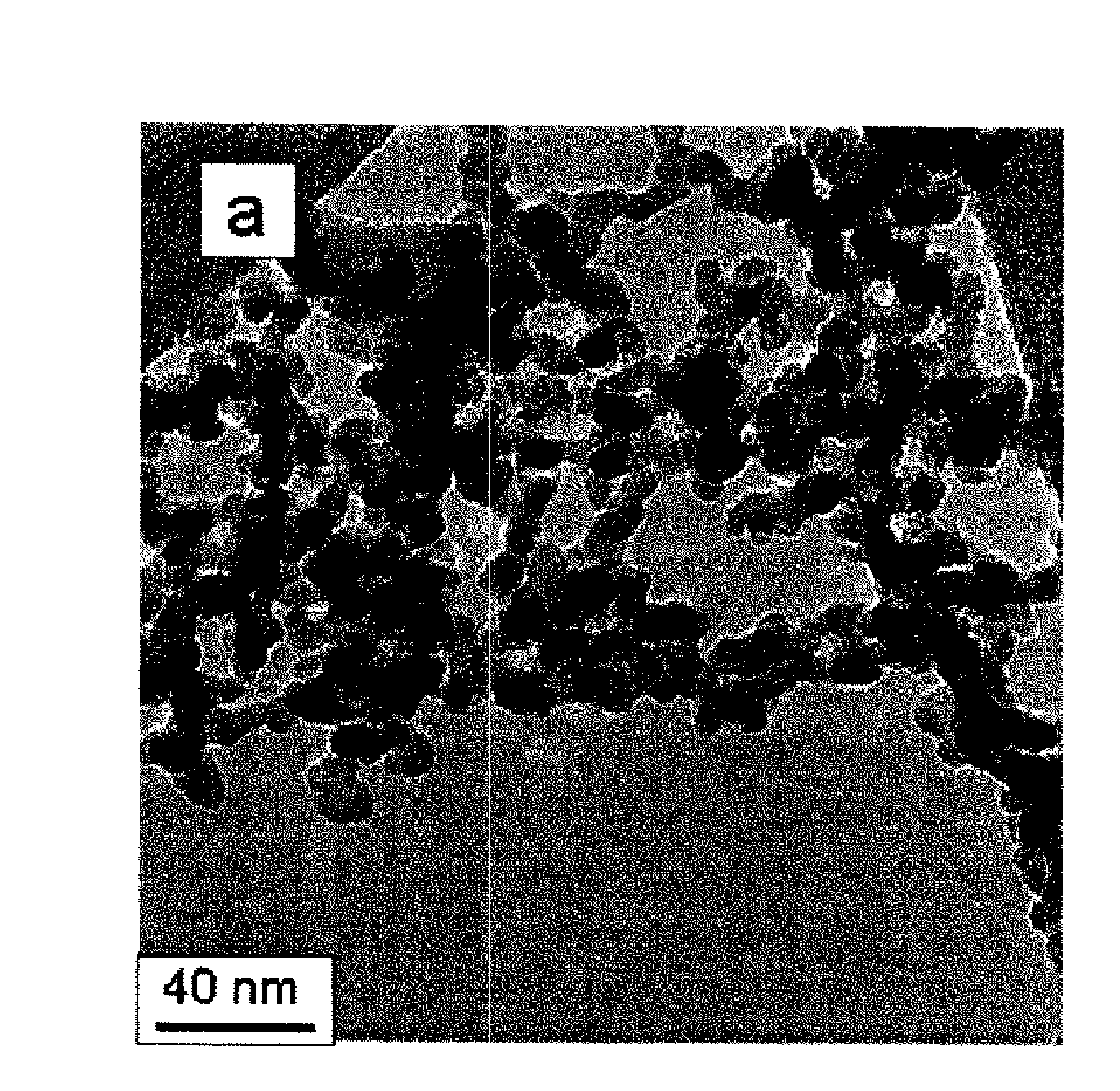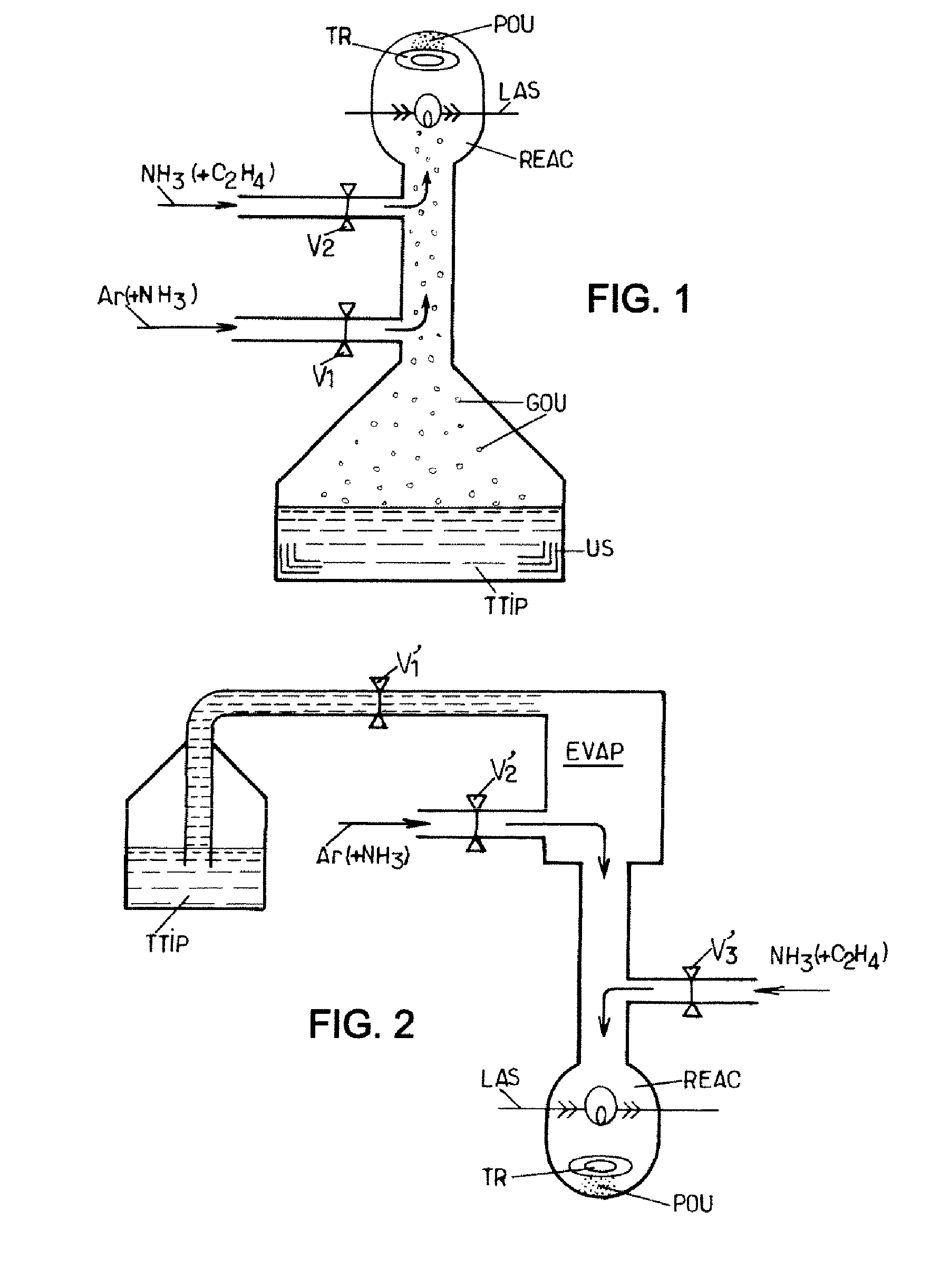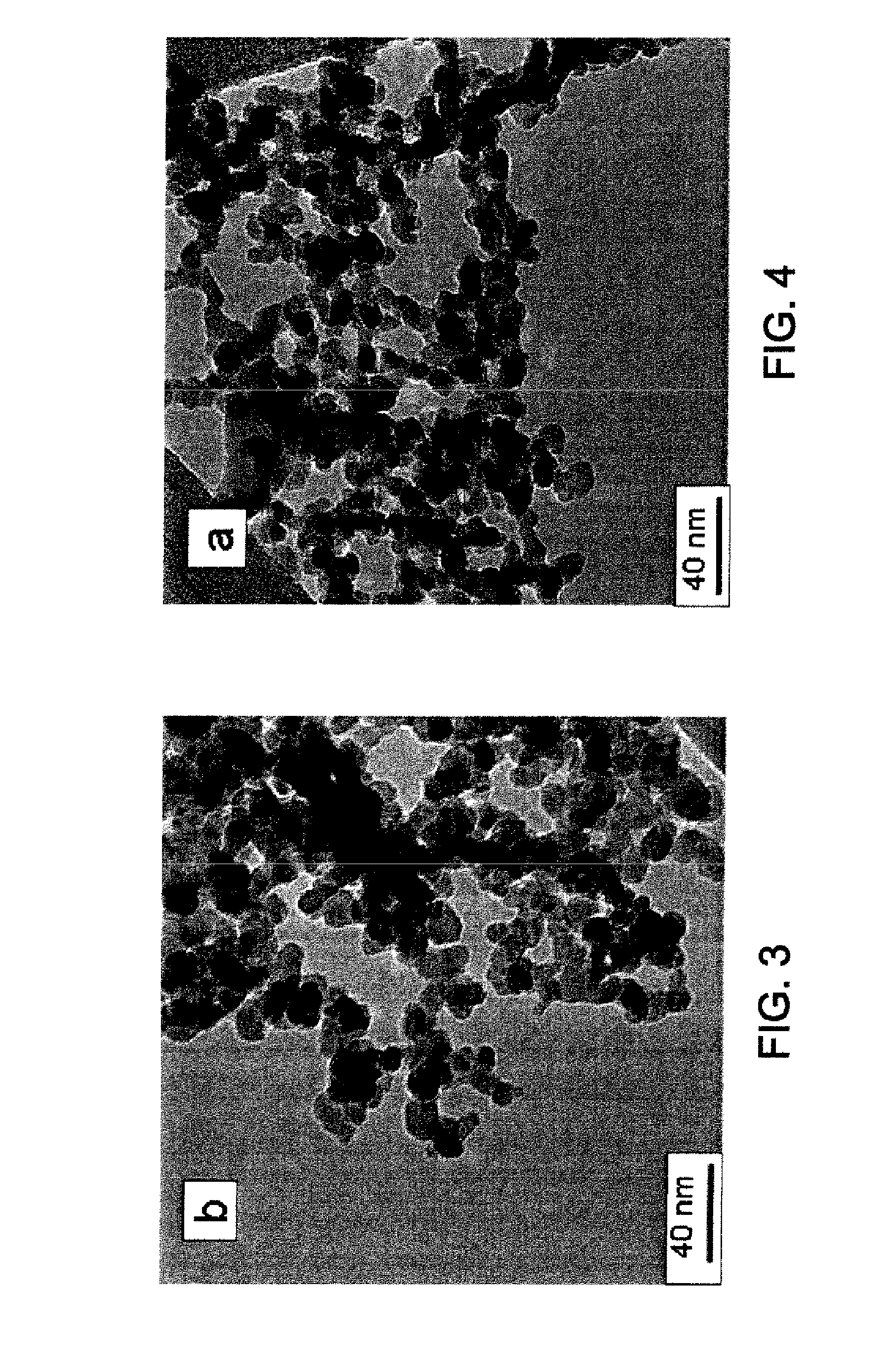Method for the synthesis of ticon, tion and tio nanoparticles by laser pyrolysis
- Summary
- Abstract
- Description
- Claims
- Application Information
AI Technical Summary
Problems solved by technology
Method used
Image
Examples
Embodiment Construction
[0102]Examples of Combustion Installations
[0103]In the example represented in FIG. 1, combustion is carried out by laser pyrolysis, here in an aerosol installation as described for example in French patent application published under number FR-2 677 558. The precursor containing TTIP titanium is in liquid form and its surface is bombarded by ultrasound US to generate GOU droplets. A first inlet for a neutral gas such as argon (arrow AR) is advantageously provided in the installation so as to entrain droplets of the TTIP precursor. Advantageously, the flow rate of neutral gas is controlled by a flow meter V1. In this way, the neutral gas participating as a fluid conveying droplets of precursor GOU is controlled in its flow rate so that the dwell time of droplets in the reaction chamber REAC may be controlled at least by the flow meter V1. Advantageously, ammonia (NH3) may be provided as a variant for argon, or complementary to argon, as the fluid carrying GOU droplets. A second inlet...
PUM
| Property | Measurement | Unit |
|---|---|---|
| Temperature | aaaaa | aaaaa |
| Temperature | aaaaa | aaaaa |
| Temperature | aaaaa | aaaaa |
Abstract
Description
Claims
Application Information
 Login to View More
Login to View More - R&D
- Intellectual Property
- Life Sciences
- Materials
- Tech Scout
- Unparalleled Data Quality
- Higher Quality Content
- 60% Fewer Hallucinations
Browse by: Latest US Patents, China's latest patents, Technical Efficacy Thesaurus, Application Domain, Technology Topic, Popular Technical Reports.
© 2025 PatSnap. All rights reserved.Legal|Privacy policy|Modern Slavery Act Transparency Statement|Sitemap|About US| Contact US: help@patsnap.com



